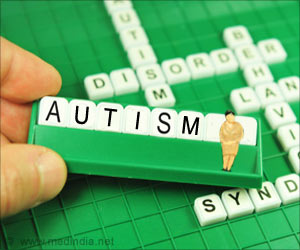Increase in the prevalence of autism disproportionately affected children without co-existing intellectual disabilities, which is in contrast to previous findings.

‘Five-fold significant increase in cases of autism spectrum disorder (ASD) has been documented in the New York-New Jersey region.
’





“One of the assumptions about ASD is that it occurs alongside intellectual disabilities,” said Josephine Shenouda, an adjunct professor at the Rutgers School of Public Health and lead author of the study published in the journal Pediatrics. “This claim was supported by older studies suggesting that up to 75 percent of children with autism also have intellectual disability.”“What our paper shows is that this assumption is not true,” Shenouda said. “In fact, in this study, two-in-three children with autism had no intellectual disability whatsoever.”
Need for further Testing
Using biannual data from the New Jersey Autism Study, researchers identified 4,661 8-year-olds with ASD in four New Jersey counties (Essex, Hudson, Ocean, and Union) during the study period. Of these, 1,505 (32.3 percent) had an intellectual disability; 2,764 (59.3 percent) did not.Subsequent analysis found that rates of ASD co-occurring with intellectual disability increased two-fold between 2000 and 2016 – from 2.9 per 1,000 to 7.3 per 1,000. Rates of ASD with no intellectual disability jumped five-fold, from 3.8 per 1,000 to 18.9 per 1,000.
Shenouda said there may be explanations for the observed increases, though more research is needed to specify the precise causes.
Advertisement
Early Intervention Crucial for Children with ASD
ASD prevalence is associated with race and socioeconomic status. The Rutgers study identified that Black children with ASD and no intellectual disabilities were 30 percent less likely to be identified compared with White children, while kids living in affluent areas were 80 percent more likely to be identified with ASD and no intellectual disabilities compared with children in underserved areas.Advertisement
“With up to 72 percent of the ASD population having borderline or average intellectual ability, emphasis should be placed on early screening, early identification and early intervention,” she said. “Because gains in intellectual functioning are proportionate with intense intervention at younger ages, it’s essential that universal screening is in place, especially in underserved communities.”
Source-Eurekalert








